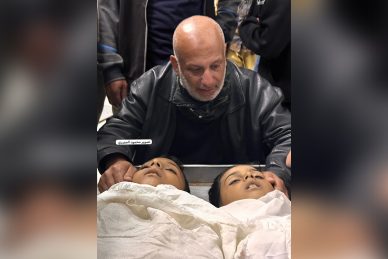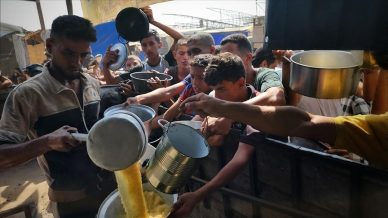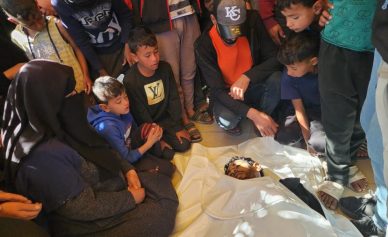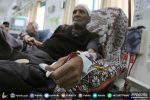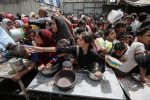GAZA, (PIC)
Amid the deep darkness imposed by Israeli aggression and the ongoing blockade on Gaza, grassroots initiatives have emerged, embodying solidarity and unity among the people of the besieged Strip, particularly with the arrival of the holy month of Ramadan. As Gaza’s neighborhoods continue to suffer from persistent power outages and the collapse of infrastructure, citizens and volunteers have launched community-driven projects to illuminate streets and neighborhoods, offering residents a glimmer of hope despite the harsh conditions.
Despite the ceasefire that took effect on January 19, after more than 15 months of relentless warfare, the lack of electricity remains one of the most pressing crises affecting all of Gaza’s residents.
In addition to Israel’s large-scale destruction of Gaza’s power grid, the occupation has cut off energy supplies from within its borders and prevented the Strip’s only power plant from resuming operations by blocking the regular entry of spare parts and fuel. Moreover, alternative energy solutions such as solar panels, batteries, generators, and their spare parts are also being denied entry.
Beyond its humanitarian and economic repercussions, this crisis has become a psychological burden for Gaza’s exhausted population, who were already grappling with hardships before the war, only for their suffering to multiply afterward. As soon as night falls, Gaza plunges into an unprecedented darkness, prompting various community groups and local organizations to step up and create hope through initiatives aimed at lighting up major streets and affected neighborhoods.
Creating hope and raising awareness
Noor Al-Ma’rifa Charity, an active organization in Al-Nuseirat refugee camp—especially in its northwest “New Camp” area, which suffered extensive destruction—was among the first to take action. Collaborating with the Al-Nuseirat municipality, local community groups, and private businesses, the charity set up an electrical network to light up the camp’s main street, particularly during Ramadan.
The organization’s chairman, Abdel Jalil Ghrab, emphasized that the initiative seeks to instill hope in people’s hearts after they have been devastated by the war. It also aims to bring vitality back to the New Camp, which was severely affected by the aggression.
In an exclusive statement to the Palestinian Information Center, Ghrab explained that providing light could help ease the psychological distress residents face by bringing a sense of comfort, especially during Ramadan nights, when people move around for Taraweeh prayers, family visits, and acts of charity.
He also noted that such initiatives highlight the fact that while the people of Gaza need food and water, they also require essential services—most importantly, electricity. This is especially crucial as efforts to resume education continue, with students struggling to study in the absence of power, which has severely disrupted learning for over a year and a half.
“These initiatives send a message to the world that we are a people who love life, peace, and stability. Despite the destruction and war that has ravaged every aspect of life here, we continue to persevere with immense determination and resilience,” he said.
Other initiatives
Noor Al-Ma’rifa’s project is not the first of its kind in Al-Nuseirat. In early February, just days after the ceasefire began, the Al-Nuseirat municipality took independent action to light up the refugee camp’s main street, stretching from Salah Al-Din Street to the marketplace.
At the time, the municipality stated that this effort was part of broader initiatives to ease the suffering of residents and facilitate movement and transportation in the area.
A few days later, the owner of the Al-Barbarawi gas station, in collaboration with the municipality, launched another initiative to light up Al-Ishreen Street, a central road in the camp connecting Al-Nuseirat’s main street to Al-Amal Street in the south.
A deepening crisis exacerbated by the occupation
While these initiatives may ignite a spark of hope in people’s hearts, particularly with the arrival of Ramadan, they do not resolve the severe humanitarian crisis caused by the complete absence of electricity and its alternatives in Gaza.
Israel’s obstruction of the humanitarian provisions outlined in the ceasefire agreement has only worsened Gaza’s plight. The electricity crisis, among other urgent issues, requires significant work, equipment, and resources to rehabilitate the power grid and restore supply from various sources.
Gaza’s Electricity Distribution Company estimates that initial losses from damage to the electrical infrastructure due to the war amount to approximately $450 million.
In multiple press statements, the company stressed that rebuilding and restoring power services would require urgent funding, extensive efforts, and immediate access to essential maintenance materials and equipment to resume electricity supply to key facilities.
Despite the ceasefire, the company reported that none of the promised materials had been delivered, posing significant challenges for its technical teams as they strive to provide electricity to essential services.
The company has called on the international community to intervene immediately to ensure the entry of necessary supplies for the electricity sector, emphasizing that this intervention is crucial for supporting reconstruction efforts and safeguarding the lives of 2.5 million residents suffering from the power crisis in Gaza.
Despite these hardships, the Palestinian people’s will to live remains stronger than the occupation’s attempts to render Gaza uninhabitable. The people of Gaza have endured unimaginable sacrifices and continue to defy the odds—persisting in their struggle to rebuild life from the ruins of destruction, in a devastated and sorrowful land that bears deep wounds and ever-growing pain.


